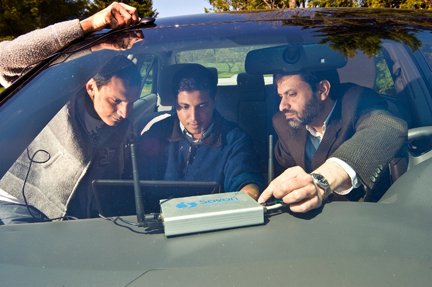
Imran Hayee and students in the Electrical and Computer Engineering program with a V2V unit
 Imran Hayee and students in the Electrical and Computer Engineering program with a V2V unit
Imran Hayee and students in the Electrical and Computer Engineering program with a V2V unit